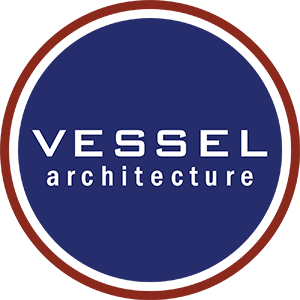Harnessing AI to Revolutionize Architectural Design and Creativity
Architects are wondering if AI will replace us. Will it be just another in a long streak of technology tools that boosts productivity? Will it be such a giant leap forward that it will fundamentally transform our practice? Or will it become a consciousness capable of replicating not just our knowledge and skills but also our nuanced intuitions and judgments?
Reflecting on historical technological transitions, such as Industrialization or the automobile, it is evident disruptive technologies don't just eliminate jobs but also create opportunities. Those transitions redefined everything from family dynamics to social structures. Similarly, AI will bring a seismic shift in how we think about and accomplish design, creativity, and collaboration.
At Vessel, we already leverage AI to enhance our creative processes, streamline operations, and deliver visionary projects. For example, we use Midjourney to generate highly realistic conceptual images. Renderings that previously required weeks are now completed in minutes. While very preliminary and not at all detailed, they capture the essential spirit of the project. This allows us to clarify the vision for stakeholders much earlier in the design process than previously possible.
AI's use cases at Vessel extend beyond our creative architectural workflow. We are using it to enhance presentations, take meeting notes, generate action items, and transform conversations into articles. This article is a great example of a practical workflow. It started as a podcast-style conversation, we asked ChatGPT to transform the transcript into an article, and now we’re re-crafting that draft into this piece.
For Vessel, the gains offset the fear. We believe there is wisdom in the unattributed quote, “You won’t lose your job to AI. You will lose your job to someone using AI.” Companies that encourage and equip their people to leverage AI will out-compete even large firms that are slow to implement AI. This is not a new dynamic. While Vessel is a relatively small firm, our focus on developing and using technology allows us to generate work that most large firms can’t or don’t. As a result, we win work that in a previous time could only have been awarded to larger firms. AI will only accelerate and enhance that dynamic.
The transformative impact of AI in architecture isn't limited to operational efficiency. By automating mundane and routine tasks, we can focus on our mission to Create Places Where People Flourish. We will create even more beautiful and functionally superior environments that enrich community and enhance quality of life.
With this belief, we are significantly increasing our financial and time investment into AI. While there are concerns about AI's role in automating technical drawing production—a significant profit center for our industry—we expect the overall impact to free up time for critical creative work instead of working on mundane tasks. If that relieves us of the need to spend so many countless hours on code research and technical details, that’s all the better for us and our clients. But no machine will match a seasoned architect's nuanced creativity and insight. And we believe AI will never replace this human element entirely.
The discourse around AI in architecture often reflects broader existential considerations about the role of technology in society and how those shifts redefine our understanding of human roles and capabilities. As AI becomes more integrated into our professional tools and processes, we are compelled to rethink our approaches, adapt our methods, and continue to innovate. Just as with every important new technology, the difference will be the scope, scale, and speed of the AI revolution.
We see AI, not as a threat, but as a tool augmenting our ability to serve clients. AI is a giant leap, but it is a continuation of the trend of technology improving productivity. In this series of articles, we will dive deeper into the specific AI tools we are using, shedding light on their practical uses and exploring their broader implications for the field of architecture.
This article is part of a series exploring the intersection of architecture and artificial intelligence, aiming to demystify the technology and inspire innovative applications within our industry.





